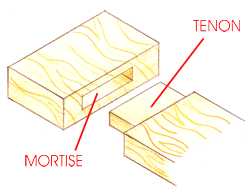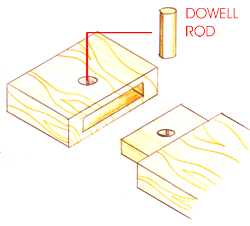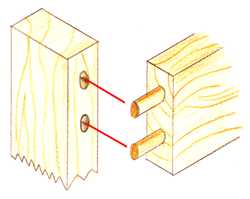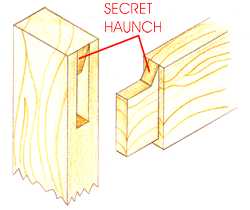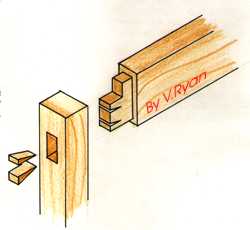|
|
|
|
|
The common mortise and tenon joint is normally used in the construction of tables and chairs. The joint is reliable is a suitable glue such as PVA or cascamite is used. The joint seen opposite can be strengthened in a number of ways including the use of dowell rod (seen below). The problem associated with the basic mortice and tenon is that over time the joint can come apart especially if it is expected to hold the weight of a person - such as the joints of a chair. |
|
DOWELLED MORTISE AND TENON JOINTS |
|
|
|
This is another example of a mortise and tenon joint. However, in this example a piece of dowel rod is drilled through the mortise and the tenon. This helps keep the joint together even when it is under great pressure. This is used as a joint on chairs and other pieces of furniture so that the joints do not break apart when extra weight is applied. |
|
To the right is another way in which dowels can be used to form a joint. Modern pieces of furniture are often jointed in this way. It is a permanent method but it is not the strongest joint as the parts can eventually pull apart, especially as the joint becomes old. Modern glues that are very strong have meant that this joint is often used to quickly fix parts together. |
|
|
|
THE SECRET HAUNCH MORTISE AND TENON If the mortise and tenon joint is to used as part of a frame a secret or sloping haunch is used. The tenon does not show on the outer side of the joint and it gives greater gluing area, adding to the overall strength of the joint. |
| WEDGED MORTISE AND
TENON This is a very strong and attractive joint. The tenon has two slots and when it is pushed into the mortise wedges are tapped into position. The wedges hold the joint together firmly and they also give the joint an interesting look. |
|
| Draw a joint that could be used for the manufacture of a coffee table.. The joints must be permanent. | |
